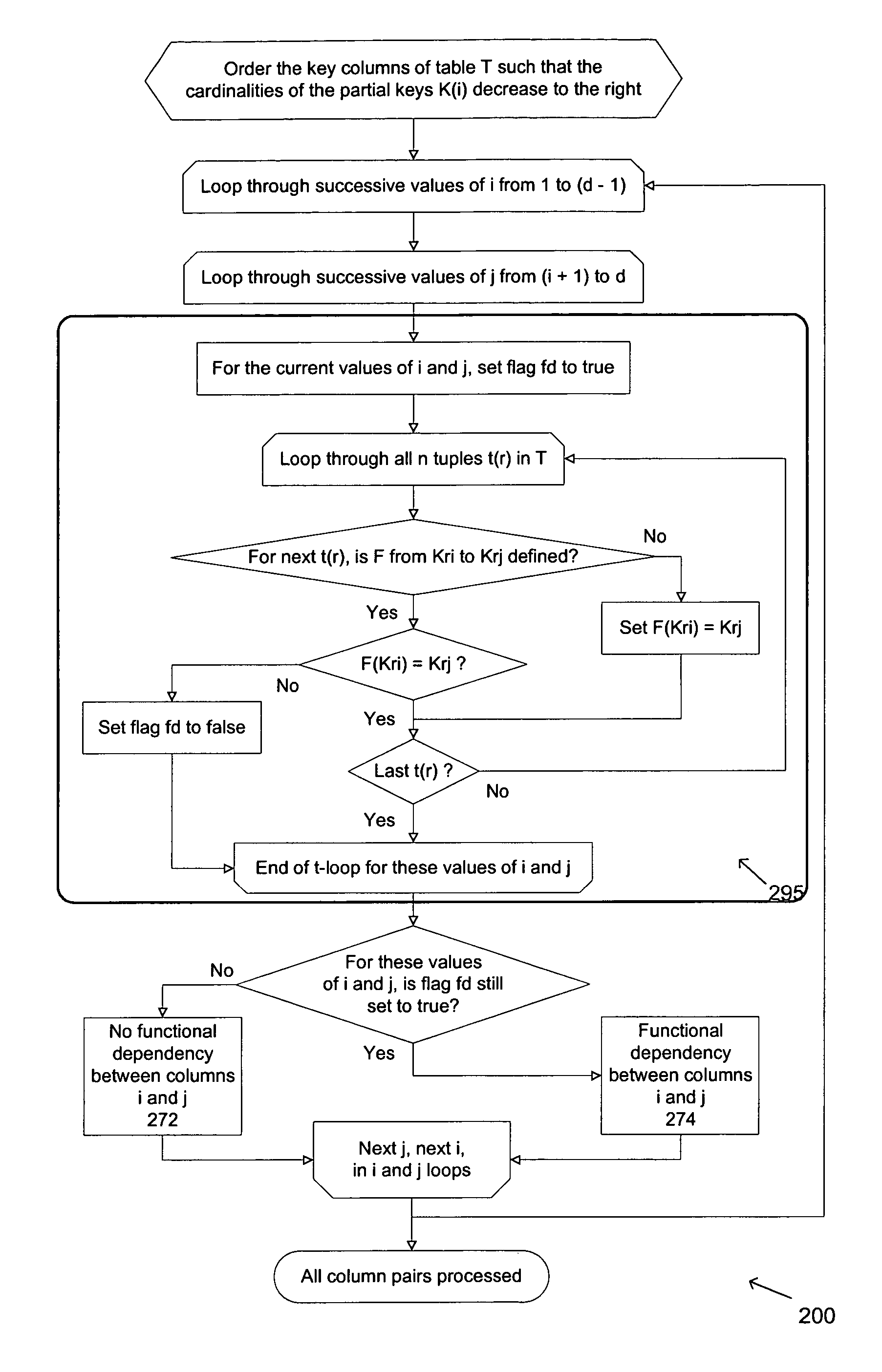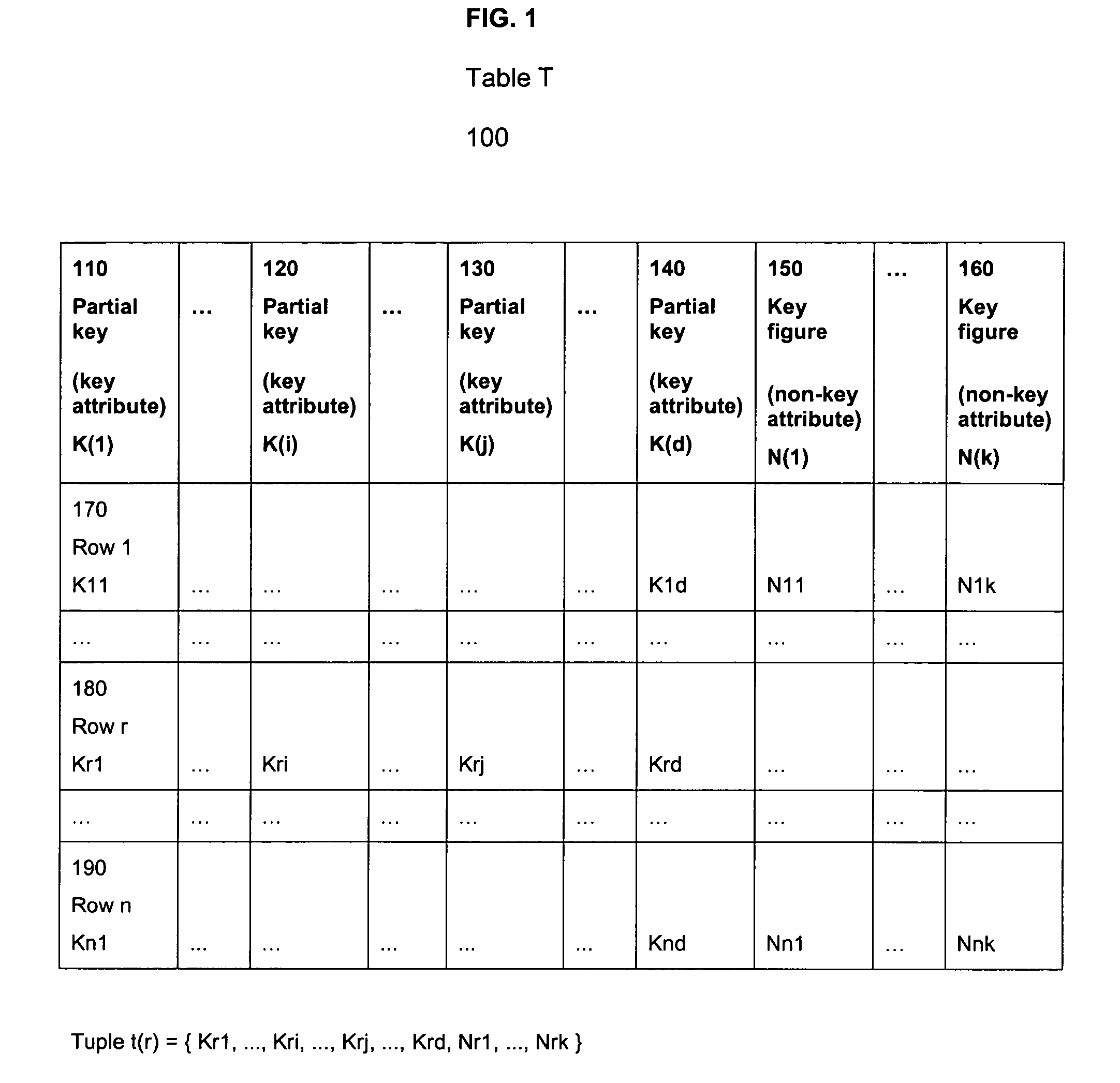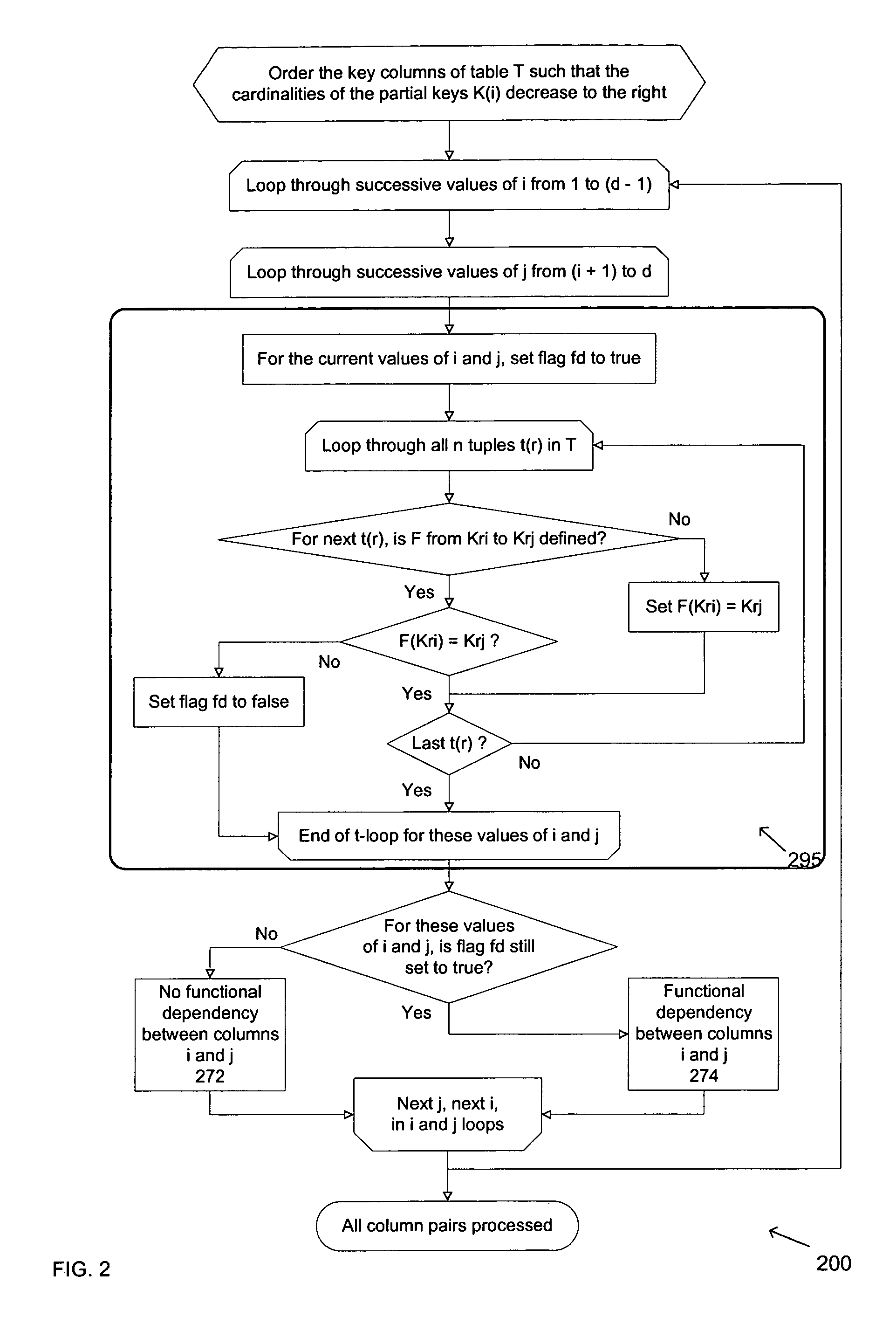Automatic elimination of functional dependencies between columns
a functional dependency and automatic elimination technology, applied in relational databases, database models, instruments, etc., can solve the problems of consuming significant information technology resources, using stored data, and using data models that are superfluous or irrelevant, and achieve the effect of reducing redundancy
- Summary
- Abstract
- Description
- Claims
- Application Information
AI Technical Summary
Benefits of technology
Problems solved by technology
Method used
Image
Examples
Embodiment Construction
[0022]The present disclosure describes systems, methods, and techniques in which a business can reduce the redundancy of stored data. The data may be stored in tables in a relational schema and may be in memory, a database, or in other machine-readable mediums. The relational schema may include a cube-like data model. In one method, the redundant data may be data that a user can eliminate by means of normalization. In an alternative method, the redundant data may be data for which an approach to normalization fails due to a number of false entries in the data set and / or outliers (e.g., data which is far removed in value from others in a data set). In the second method, similarity-based or data cleansing functionality can be used to generate an exception list that can be of assistance in reducing the amount of redundant data. The data reduction methods, such as a method for reducing data redundancy by reorganizing the data, may reduce the resources required to handle and store the da...
PUM
 Login to View More
Login to View More Abstract
Description
Claims
Application Information
 Login to View More
Login to View More - R&D
- Intellectual Property
- Life Sciences
- Materials
- Tech Scout
- Unparalleled Data Quality
- Higher Quality Content
- 60% Fewer Hallucinations
Browse by: Latest US Patents, China's latest patents, Technical Efficacy Thesaurus, Application Domain, Technology Topic, Popular Technical Reports.
© 2025 PatSnap. All rights reserved.Legal|Privacy policy|Modern Slavery Act Transparency Statement|Sitemap|About US| Contact US: help@patsnap.com



